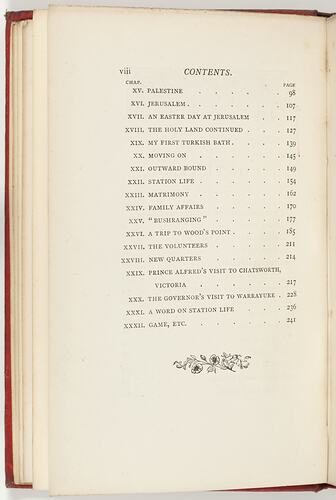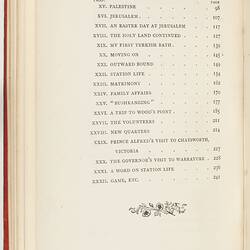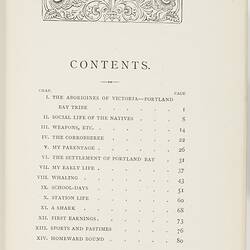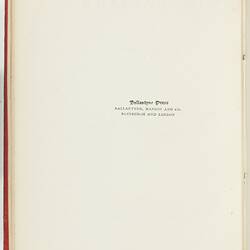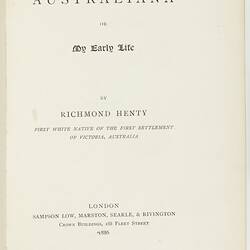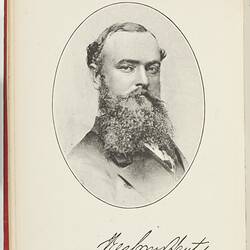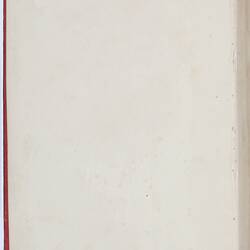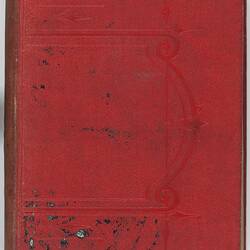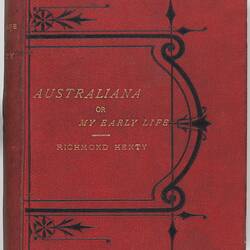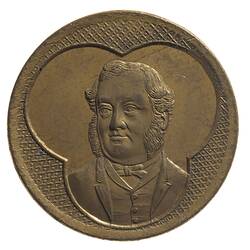Summary
Book titled 'Australiana, or, My Early Life' by Richmond Henty, published by Sampson, Low, Marston, Searle and Rivington, in London in 1886. Richmond Henty was born August 3, 1837. The son of Stephen and Jane Henty, he was the first white child born at Portland Bay, Victoria.
The four Henty brothers Edward, Francis, Stephen and John and their families, are credited with establishing the first permanent settlement in what would become the state of Victoria. The Henty's established a permanent settlement at Portland Bay, as well as the settlements of Digby (on Emu Creek) and Hotspur (on the Crawford River) in the late 1830s.
The Henty brothers had intended to follow pastoral pursuits at Portland, however they also found both sperm and black whales so plentiful that Edward and Stephen went into partnership as The book records Henty's early life in the Portland District, his journey to England to complete his education and his later life managing properties for his family.
Physical Description
Octavo, frontispiece and double-page map, original decorated and gilt-lettered red cloth.
Significance
This collection of material relates to the early colonial history of Melbourne, an area in which the museum's collections are currently fairly weak but which forms a key segment in the new Melbourne exhibition. The Exhibition Programme and Port Phillip Almanac have been identified as having strong display potential in the Melbourne exhibition. The objects have been selected to illustrate particular exhibition themes which are currently outlined in the 'The Melbourne Exhibition: Design Concept, August 2006. These are 'Colonial Outpost' and 'Boom and Bust City'. The Programme would also be a significant addition to the REB collection, while the Almanac offers an opportunity to acquire a rare item which so effectively evokes the pioneering confidence of this early period.
The Westgarth and Henty publications augment the museum's collections relating to William Westgarth (silver) and Richmond Henty (the cot); the silver has been selected for the exhibition. These, and the other books, all have significant potential for research and display, as providing personal contemporary perspectives on Victoria's nineteenth century history.
While much of the material is paper-based, there is the potential to turn pages to extend the display life of many of the items. It is critical for collection acquisition be undertaken at this stage of the exhibition development in order to develop the collection's weaker areas and enrich the material weight of the Melbourne exhibition.
More Information
-
Collecting Areas
-
Acquisition Information
Purchase
-
Author
-
Publisher
Sampson, Low, Marston, Searle & Rivington,, London, England, Great Britain, 1886
-
Other Association (See Comments)
1898
Dated inscribed by John A. Venour -
Inscriptions
Cover embossed in gilt : AUSTRALIANA / OR / MY EARLY LIFE / RICHMOND HENTY ". Title page signed: "John A. Venour 1898"
-
Classification
-
Category
-
Discipline
-
Type of item
-
Overall Dimensions
17.4 cm (Length), 12.2 cm (Width), 2.3 cm (Height)
-
Keywords
